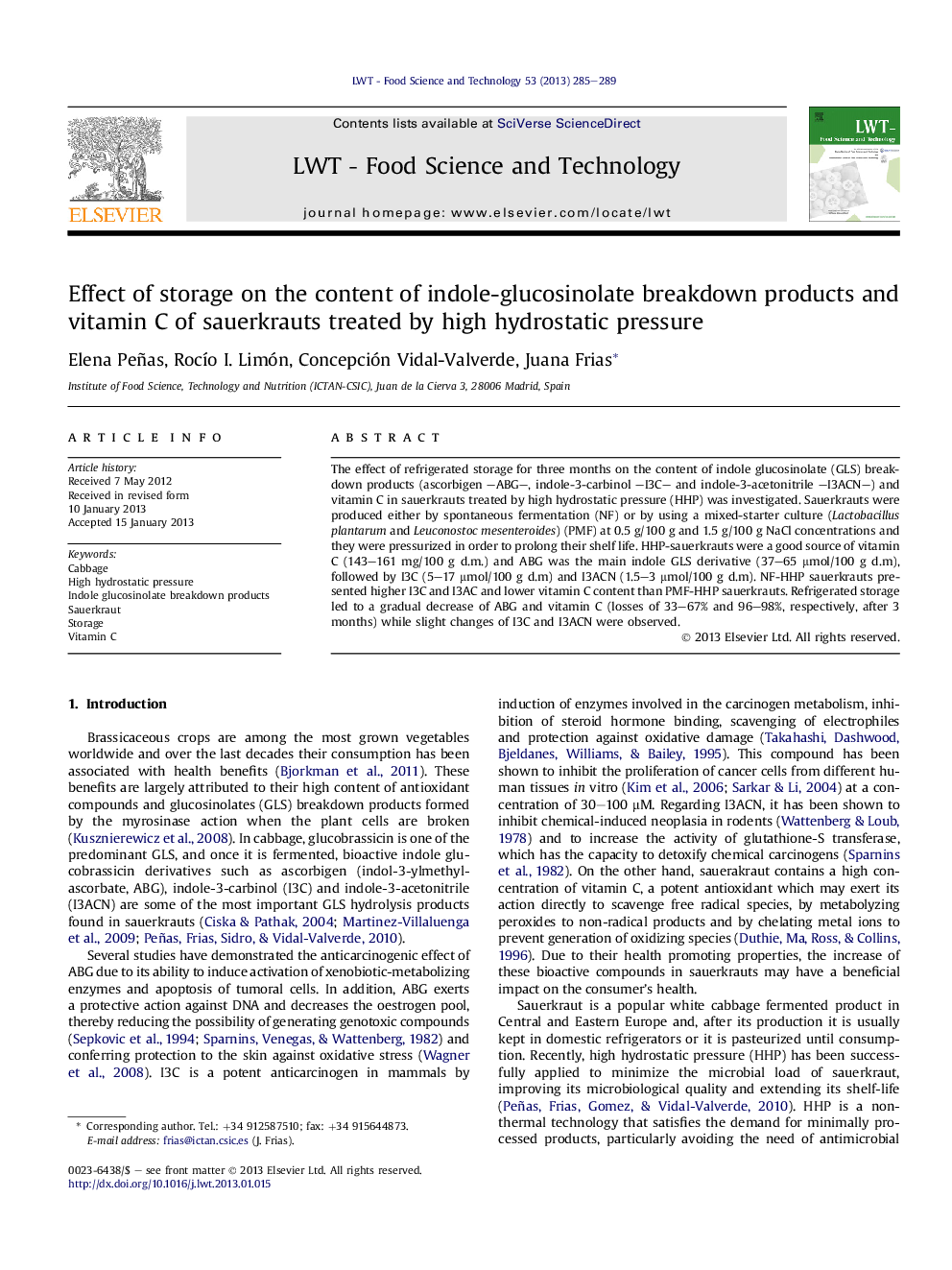| Article ID | Journal | Published Year | Pages | File Type |
|---|---|---|---|---|
| 6403126 | LWT - Food Science and Technology | 2013 | 5 Pages |
The effect of refrigerated storage for three months on the content of indole glucosinolate (GLS) breakdown products (ascorbigen -ABG-, indole-3-carbinol -I3C- and indole-3-acetonitrile -I3ACN-) and vitamin C in sauerkrauts treated by high hydrostatic pressure (HHP) was investigated. Sauerkrauts were produced either by spontaneous fermentation (NF) or by using a mixed-starter culture (Lactobacillus plantarum and Leuconostoc mesenteroides) (PMF) at 0.5 g/100 g and 1.5 g/100 g NaCl concentrations and they were pressurized in order to prolong their shelf life. HHP-sauerkrauts were a good source of vitamin C (143-161 mg/100 g d.m.) and ABG was the main indole GLS derivative (37-65 μmol/100 g d.m), followed by I3C (5-17 μmol/100 g d.m) and I3ACN (1.5-3 μmol/100 g d.m). NF-HHP sauerkrauts presented higher I3C and I3AC and lower vitamin C content than PMF-HHP sauerkrauts. Refrigerated storage led to a gradual decrease of ABG and vitamin C (losses of 33-67% and 96-98%, respectively, after 3 months) while slight changes of I3C and I3ACN were observed.
⺠Sauerkrauts were pressurized and stored in refrigeration for 3 months. ⺠Vitamin C and indole GLS-derivative content was monitored during storage. ⺠Ascorbigen and vitamin C contents decreased during storage. ⺠Indole-3-carbinol and indole-3-acetonitrile amounts did not change during storage. ⺠Pressurization and storage of sauerkraut decreased its bioactive potential.
